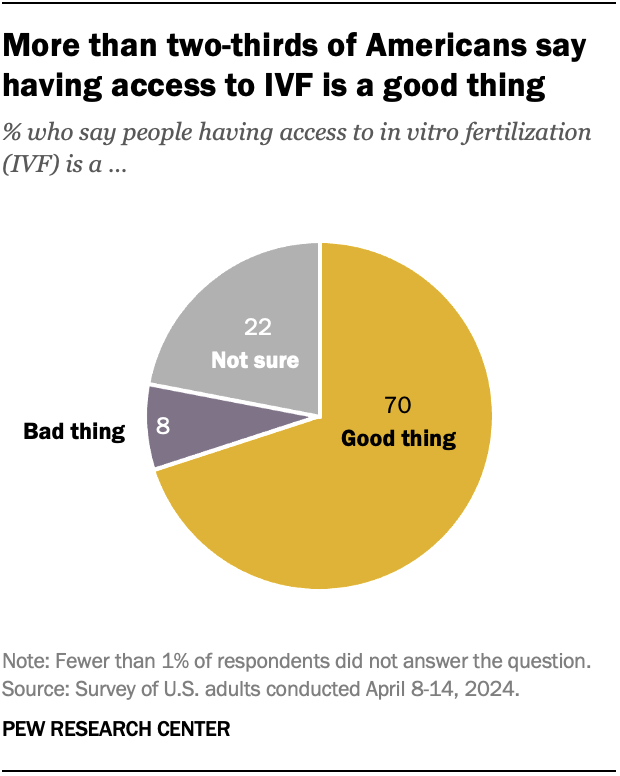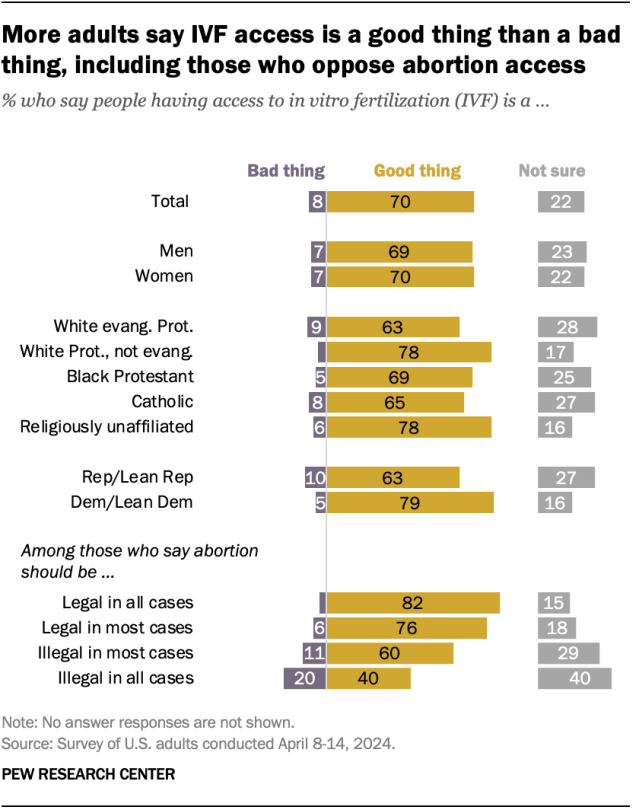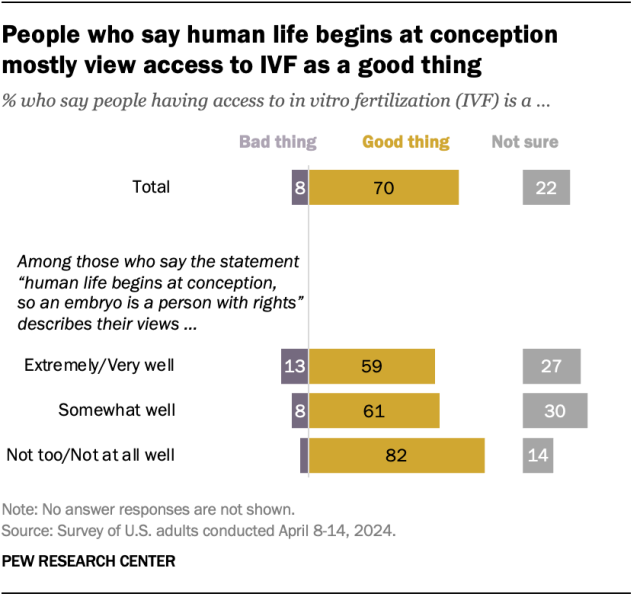The political debate around access to in vitro fertilization (IVF) intensified this year, following an Alabama Supreme Court decision in February that frozen embryos could be considered children.

An April Pew Research Center survey finds that Americans overwhelmingly say people having access to IVF is a good thing.
Seven-in-ten adults say IVF access is a good thing. Just 8% say it is a bad thing, while 22% are unsure.
There are only modest differences in views of IVF access across most demographic and partisan groups.
Related: Broad Public Support for Legal Abortion Persists 2 Years After Dobbs
Pew Research Center asked about Americans’ views of in vitro fertilization (IVF) as part of a larger study exploring their social and political attitudes. Questions covered Americans’ views on the legality of abortion and their perceptions of abortion access.
We surveyed 8,709 U.S. adults from April 8 to 14, 2024. Everyone who took part in this survey is a member of the Center’s American Trends Panel (ATP), an online survey panel that is recruited through national, random sampling of residential addresses. This way nearly all U.S. adults have a chance of selection. The survey is weighted to be representative of the U.S. adult population by gender, race, ethnicity, partisan affiliation, education and other categories. Read more about the ATP’s methodology.
Here are the questions used for this analysis, along with responses, and its methodology.
Views by gender

Women (70%) and men (69%) are about equally likely to say IVF access is a good thing.
Views by religious affiliation
Across religious groups, far more people say IVF access is a good thing than a bad thing.
White nonevangelical Protestants and religiously unaffiliated Americans are particularly likely to say IVF access is a good thing (78% each). Clear majorities of White evangelicals (63%), Black Protestants (69%) and Catholics (65%) also say this.
Views by partisanship
About six-in-ten Republicans and Republican-leaning independents (63%) say IVF access is a good thing while one-in-ten say it’s a bad thing. Another 27% are not sure.
By comparison, Democrats and Democratic leaners are more likely to say IVF access is a good thing (79%) and somewhat less likely to say it is a bad thing (5%) or that they are unsure (16%).
Views by opinion on abortion
Regardless of their support for or opposition to legal abortion, clear majorities say having access to IVF is good.
Those who say abortion should be legal in all (82%) or most (76%) cases are particularly likely to say IVF access is a good thing.
But even those who say abortion should be illegal in most cases generally view IVF access positively (60% say it’s good). And while views of IVF are least positive among those who say abortion should always be illegal, this group is still twice as likely to say having access to IVF is good (40%) as to say it’s bad (20%). An additional 40% say they are not sure.
Views by beliefs about when life begins
When considering Americans’ views about when life begins, there is a similar pattern.

Overall, about a third of Americans say the statement “human life begins at conception, so an embryo is a person with rights” describes their views extremely or very well. Among those who express this view, 59% say IVF access is a good thing, while just 13% say it is a bad thing.
Among those who say the statement describes their views somewhat well, 61% say IVF access is a good thing.
A larger share (82%) of those who do not hold the view that life begins at conception have a positive view of IVF access.
Note: Here are the questions used for this analysis, along with responses, and its methodology.
